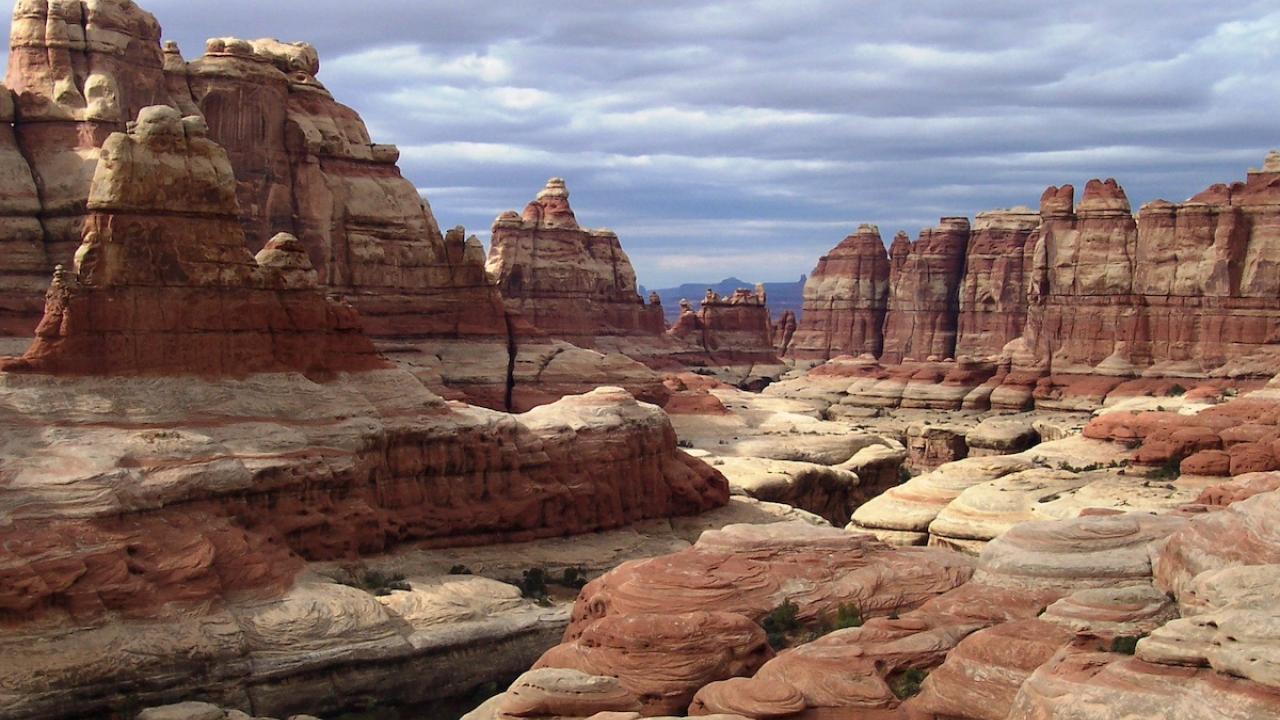
UC Davis Alum Explores Mysteries of the National Parks in New Book
Did Al Capone have an outpost in the Everglades? How do inanimate stones manage to slide across the flat landscape of Death Valley National Park? And what happened to the lost colony of Roanoke?
For UC Davis alum and outdoor writer Mike Bezemek, these tantalizing mysteries, and many others, are the subject of his new book Mysteries of the National Parks: 35 Stories of Baffling Disappearances, Unexplained Phenomena, and More.

In the book, Bezemek probes beneath the stunning beauty of National Park System sites to explore hidden history, infamous crimes, strange discoveries, legendary figures and more. The result is a gripping nonfiction book that breathes life into history and geography through stories.
In each of the book’s chapters, Bezemek explores the history behind a mystery from a National Park unit. Peppered throughout are subsections that provide readers with visitation tips and additional context.
“A lot of my books mix stories and travel,” said Bezemek, who graduated from UC Davis in 2003 with a degree in geology. “Several of my prior books were guidebooks that are organized not around a region or place so much as organized around a story.”
Finding mysteries in the National Parks
The idea to write a book anchored around the mysteries of the National Park Service came to Bezemek when he moved to the East Coast of the United States.
After graduating from Washington University in St. Louis with an M.F.A. in writing, the former whitewater rafting and wilderness backpacking guide started freelancing for magazines like Canoe & Kayak, Outside, Smithsonian and Blue Ridge Outdoors, among others. The work took him to some lesser-known National Park Service sites.
“Being from the West Coast, I was used to the mega scenery of the big national parks, like Arches, Yosemite, Yellowstone and Death Valley,” said Bezemek, who as a geology student at UC Davis traveled to some of these places for field trips.
While picturesque with plenty of opportunities for outdoor recreation, the National Park Service sites on the East Coast that Bezemek visited often held hidden histories and mysteries, both natural and human. What forces created the bald peaks dotting the ridges of the Appalachian Mountains? And who were all the conspirators involved in the plot to assassinate Abraham Lincoln?
“When I first visited, I had no idea that Ford’s Theatre was a unit of the National Park System,” said Bezemek, referencing the site where Lincoln was assassinated.
As Bezemek filed freelance stories, he amassed more and more mysteries and curious tales.
“In the end, I had so many things that I have several more books worth of material,” he said.
Geology and storytelling

Mike Bezemek
Bezemek’s undergraduate education in geology offered him a blueprint for how to write about history and the National Parks.
“Geology is a big creative science because it’s trying to get at the whole of history,” Bezemek said. “Why does the land look like this here? Which parts are natural and which parts are human influenced? That type of thinking really helps me unravel things and understand why things happen in certain places.”
The degree primed Bezemek for big picture thinking, giving him a generalist's understanding of the natural landscape. True to that background, Bezemek’s prose shines when he details natural and geological processes. A deep reading of historical resources informs his captivating narratives about past people and events.
“I feel like one of the reasons why it can be very hard for us to feel like a part of history, or understand history, or relate to it — and also with science — is because it feels so foreign or so distant. How do you make it feel immediate and immersive?” Bezemek said. “How do you dramatize science? How do you dramatize history? That’s what I’m trying to do.”
From diving into theories about the creation of Utah’s Upheaval Dome in Canyonlands National Park to exploring the life of the frontierswoman best known as Calamity Jane, the narratives in Bezemek’s book are wide-ranging and stem from across the U.S.
For Bezemek, there’s an attractive element of discovery to writing and storytelling. He likened it to his experiences kayaking on a river or hiking a trail. The path may be clear for a bit, but there’s always a corner to go around.
“It’s a really thrilling kind of thing because you don’t always know what’s around the corner,” Bezemek said. “The most exciting stories are quests and adventures.”
